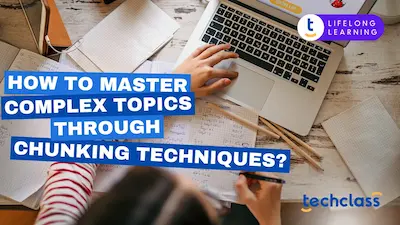
Have you ever spent hours reading something, only to realize later that you barely remember it, or worse, you don’t actually understand it?
If that sounds familiar, you’re not alone. But the good news is, there’s a simple, powerful method to help you learn anything faster and more deeply: the Feynman Technique.
Named after the famous physicist Richard Feynman, this method is a game-changer for students, professionals, and lifelong learners. In this blog post, we’ll explore what the Feynman Technique is, why it works, and how you can apply it to master any topic.
Richard Feynman, often called “The Great Explainer,” believed that if you can’t explain something simply, you don’t really understand it.
The Feynman Technique builds on this idea by challenging you to teach what you’re learning in the simplest terms possible, just like you’d explain it to a child or someone unfamiliar with the topic.
Rather than passively reading or highlighting, the technique pushes you to actively break down concepts, identify your weak spots, and truly grasp how things work.
Start by choosing a specific concept or topic you want to understand.
It could be a:
Write the topic at the top of a blank page or notebook. This sets the stage for your personal teaching session.
Now, imagine you’re explaining the concept to a complete beginner, maybe a 12-year-old or a curious friend.
Without looking at your notes, write down your explanation using plain, everyday language. Avoid technical terms or, if you must use them, make sure you also explain what they mean.
For example, if you’re explaining compound interest, you might say:
“Compound interest is when you earn interest not just on your original money, but also on the interest you’ve already earned, like a snowball getting bigger as it rolls downhill.”
This step forces your brain to organize the information and make it accessible, which deepens your understanding.
As you explain, you’ll likely hit moments where you hesitate or realize you can’t fully explain why something works.
This is gold!
These are your knowledge gaps, and they point you to exactly where you need to focus. Go back to your textbooks, articles, or videos, and review the parts that weren’t clear.
Then, return to your explanation and improve it, making sure you can now teach those tricky parts confidently.
Once you’ve filled in the gaps, challenge yourself to make the explanation even simpler.
Can you use an analogy or story to explain it? Analogies connect new ideas to familiar ones, making the concept easier to grasp and remember.
For example, instead of just defining “photosynthesis,” you might say:
“Plants are like little factories that take sunlight, water, and air and turn them into food, kind of like how a bakery turns flour, sugar, and eggs into cake.”
The simpler and more vivid your explanation, the better you’ll remember it.
The Feynman Technique is most powerful when you review your explanations over time.
Come back to your notes, test yourself again, and keep refining your teaching script. Each time you do this, you strengthen your memory and sharpen your understanding.
You can even try teaching the topic to a real person, like a friend, sibling, or coworker, if they can understand it, you’re on the right track!
The Feynman Technique works because it flips the learning process from passive to active.
Here’s why it’s so effective:
It’s a simple method, but it’s incredibly powerful.
If you want to get the most out of the Feynman Technique, try these tips:
Learning something new doesn’t have to feel overwhelming or slow.
By using the Feynman Technique, you tap into a smarter, faster way of learning, one that’s based on clarity, simplicity, and active engagement.
So, the next time you face a challenging topic, don’t just passively read or watch videos. Sit down, grab a blank page, and try to teach it. You’ll be surprised how quickly you uncover what you know, what you don’t, and how fast you can bridge the gap.
Happy learning!


